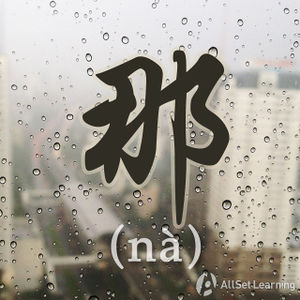Difference between revisions of "Measure words with "this" and "that""
| Line 17: | Line 17: | ||
<div class="liju"> | <div class="liju"> | ||
| − | * <em>那</em> 个 人 <span class="trans"> | + | * <em>那</em> 个 人 <span class="trans">That person.</span> |
| − | * <em>这</em> 瓶 啤酒 <span class="trans"> | + | * <em>这</em> 瓶 啤酒 <span class="trans">This bottle of beer.</span> |
| − | * <em>那</em> 块 巧克力 <span class="trans"> | + | * <em>那</em> 块 巧克力 <span class="trans">That piece of chocolate.</span> |
| − | * <em>这</em> 张 桌子 <span class="trans"> | + | * <em>这</em> 张 桌子 <span class="trans">This table.</span> |
| − | * <em>这</em> 本 书 | + | * <em>这</em> 本 书<span class="trans">This book.</span> |
| − | * <em>这</em> 个 手机 | + | * <em>这</em> 个 手机<span class="trans">This cell phone.</span> |
| − | * <em>这</em> 只 小 狗 | + | * <em>这</em> 只 小 狗<span class="trans">This small dog.</span> |
| − | * <em>那</em> 只 小 猫 | + | * <em>那</em> 只 小 猫<span class="trans">That small cat.</span> |
| − | * <em>那</em> 杯 咖啡 | + | * <em>那</em> 杯 咖啡<span class="trans">That cup of coffee.</span> |
| − | * <em>那</em> 条 鱼 | + | * <em>那</em> 条 鱼<span class="trans">That fish.</span> |
</div> | </div> | ||
Revision as of 09:33, 6 November 2013
-
Level
-
Similar to
-
Used for
-
Keywords
In English, when you refer to "that girl" or "this table" you only need to words: "this" or "that" plus the noun you're referring to. In Chinese, though, you also need a measure word in the middle between the two. In the very beginning you can get away with using 个 (ge) for everything, but pretty soon you're going to have to start using other measure words in these simple phrases.
Structure
If you use 这 (zhè) or 那 (nà) before a noun, you need to include a measure word (MW).
这 / 那 + MW + Noun
Examples
- 那 个 人 That person.
- 这 瓶 啤酒 This bottle of beer.
- 那 块 巧克力 That piece of chocolate.
- 这 张 桌子 This table.
- 这 本 书This book.
- 这 个 手机This cell phone.
- 这 只 小 狗This small dog.
- 那 只 小 猫That small cat.
- 那 杯 咖啡That cup of coffee.
- 那 条 鱼That fish.
See also
Sources and further reading
Books
- Basic Patterns of Chinese Grammar (pp. 33) →buy



